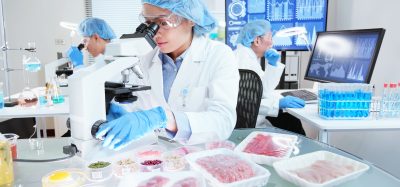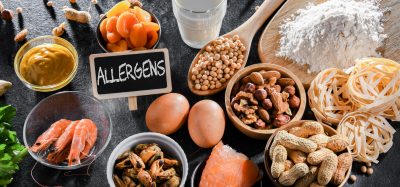Leaders’ Series 2017 with Nestlé: Food Safety: Room for improvement
- Like
- Digg
- Del
- Tumblr
- VKontakte
- Buffer
- Love This
- Odnoklassniki
- Meneame
- Blogger
- Amazon
- Yahoo Mail
- Gmail
- AOL
- Newsvine
- HackerNews
- Evernote
- MySpace
- Mail.ru
- Viadeo
- Line
- Comments
- Yummly
- SMS
- Viber
- Telegram
- Subscribe
- Skype
- Facebook Messenger
- Kakao
- LiveJournal
- Yammer
- Edgar
- Fintel
- Mix
- Instapaper
- Copy Link
Posted: 17 February 2017 | John O'Brien (Nestlé Health Science) | No comments yet
Nestlé Health Science’s John O’Brien gives us his insight and predictions for 2017…
In the context of food, the next 20-40 years will be the most important ever!
Significantly, the systems that deliver food to our table are under enormous pressure. Forty percent of all arable land on earth is used for agriculture; 70% of freshwater goes to agriculture; and 25% of greenhouse gasses come from agriculture. However, food losses pre-and post-harvest and food waste post production can reach 60-80% in some cases. It is notable that the current global production of food is enough to feed its entire population one and a half times, yet one in eight people suffer from chronic malnutrition. 800 million humans currently go hungry; two billion have diets that lack micronutrients and 1.9 billion are overweight or obese.
The challenges facing food safety are no less daunting. Despite having the safest food supply in history, many consumers in the West remain highly concerned about their food. In parallel, society is witnessing a ‘trust shift’ from trust in the traditional institutions to social trust in the so-called collaborative economy. There are marked generational differences in attitudes to food among consumer groups (e.g. millennials vs generations X and Y vs baby boomers). Science is also under pressure. This is reflected in the decision of the Oxford Dictionaries to propose ‘post-truth’ as Word of the Year 2016.
Post-truth is defined as ‘relating to or denoting circumstances in which objective facts are less influential in shaping public opinion than appeals to emotion and personal belief’. Fortunately, there are remedies to the above challenges, but they mean transforming our thinking about food production, manufacture and consumption. This will include discarding some past thinking and adopting new paradigms and tools.
At the outset, it will not be feasible to solve systems-wide, global and cross-sectoral problems by working alone. More collaboration will be needed. Public-private partnerships and pre-competitive collaborative research by the private sector will be essential. Universities will have to step up their efforts address these problems in partnership with other stakeholders. Better science communication and risk communication will also be needed to ensure that the stakeholders in the process are informed and able to contribute.
A final aspect to consider is that some of the trends in global consumption patterns are unsustainable. A good example of this is the global demand for meat. Antimicrobial resistance among human pathogens is a growing concern that has led to restrictions in the use of antibiotics in agriculture and an increase in more stringent clinical guidelines. However, it is currently predicted that we will be using two thirds more antibiotics by 2030 due to intensification alone. Thus, more preventative approaches to animal health protection will be needed and the impact of animal agriculture on the environment will need to be better managed. Non-animal proteins will inevitably gain in popularity.
All of the above will lead to more consumer choice and result in a more informed customer. Data delivery to buyers via digital technology brings the possibility of healthier and more confident food consumers and, hopefully, also a more healthy planet.
About the Author


John O’Brien, Nestlé Health Science
The Nestlé Research Centre is the world’s largest industry-based food research centre with more than 600 scientists dedicated to research in food science & technology, nutrition, consumer preference, and food safety. John leads the Food Safety & Integrity Research Programme (corporate global competence unit for food safety with 150 staff dealing with food safety research projects and business support to all categories, businesses and markets).







